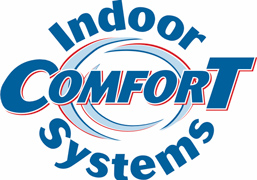
Ceiling fans are one of the most underrated ways to increase home comfort and reduce energy costs. By improving air circulation and working in conjunction with your HVAC system, ceiling fans and energy efficiency are truly a match made in heaven. They offer a practical, cost-saving way to keep cool while lessening strain on your AC—helping you avoid unnecessary air conditioning repair.
In this blog, the experts at Indoor Comfort Systems HVAC break down how ceiling fans can make your home feel more comfortable while avoiding energy waste with increased HVAC efficiency. We'll also offer some HVAC efficiency tips that make the most of ceiling fans.
Comfort vs. Temperature: The Effect of the Wind-Chill Effect Indoors
Ceiling fans don’t actually lower the room temperature—they cool you down by increasing air movement across your skin. This is called the wind-chill effect, and it can make a room feel up to 4 degrees cooler without lowering the thermostat. That means you stay comfortable and enjoy the benefits of indoor air circulation from your ceiling fan while minimizing air conditioner use—helping reduce your electric bill in summer.
The Best of Both: Advantages of Pairing Fans and Air Conditioning Together
There are several benefits to using ceiling fans and air conditioning at the same time, especially on hotter days. By combining both, you maximize HVAC efficiency and keep your home cooler with less effort from your cooling system.
Why you should use ceiling fans and AC together:
- Ceiling fans help lower HVAC load by distributing cool air more evenly throughout a room. Reducing HVAC stress is important, because it can help you avoid a breakdown that may lead to premature AC or furnace installation.
- Using overhead fans boosts the comfort level of your home by reducing uneven temperatures and enhancing circulation.
- Running both ceiling fans and AC can lower your utility usage. If you have a home automation system, you can even fine-tune your smart thermostat settings to set the temperature higher while your ceiling fan is running.
Clockwise vs. Counterclockwise Ceiling Fan Rotation: What Direction to Spin in Summer and Winter?
To make full use of your ceiling fans year-round, it’s important to ensure blades are rotating in the right direction for the season. The direction impacts how air flows, which can either or gently recirculate warm air so you feel warmer.
When to rotate ceiling fans counterclockwise
In the summer, ceiling fans should spin counterclockwise at a quick speed. This creates a breeze that moves air toward the floor, increasing the wind-chill effect and causing you to feel cooler.
When to spin ceiling fans clockwise
When it's cold out, set your fan to turn clockwise on a slower speed. This softly moves cold air up and circulates heated air down to where you can feel it, so you feel warmer without changing your thermostat.
How to Pick Out the Best Ceiling Fan for My Home
Selecting the right ceiling fan depends on a few important details, including blade design, airflow rating and room dimensions. First, look for fans that have a good balance of ECFM airflow and blade pitch to deliver efficient air circulation in your space:
- ECFM is the amount of air a fan circulates—the cubic feet per minute, or CFM—per watt of electricity used. Fans with higher ECFM are more energy efficient.
- Blade pitch refers to the angle of the blades. A sharper blade pitch moves more air but can also stress the fan’s motor.
Also, consider room size when sizing a ceiling fan—a fan that’s too small won’t move as much air as you'd like, while one that’s too big may be disruptive in a smaller room.
Raise Your HVAC Efficiency With Help from Indoor Comfort Systems HVAC
At Indoor Comfort Systems HVAC, our HVAC technicians can help you maintain a cozy home while reducing strain on your heating and cooling systems. From efficient ceiling fan strategies and air conditioning installation to smart thermostats and furnace repair, we offer comprehensive solutions that match your needs. Set up your appointment by calling 215-741-5505 today.
